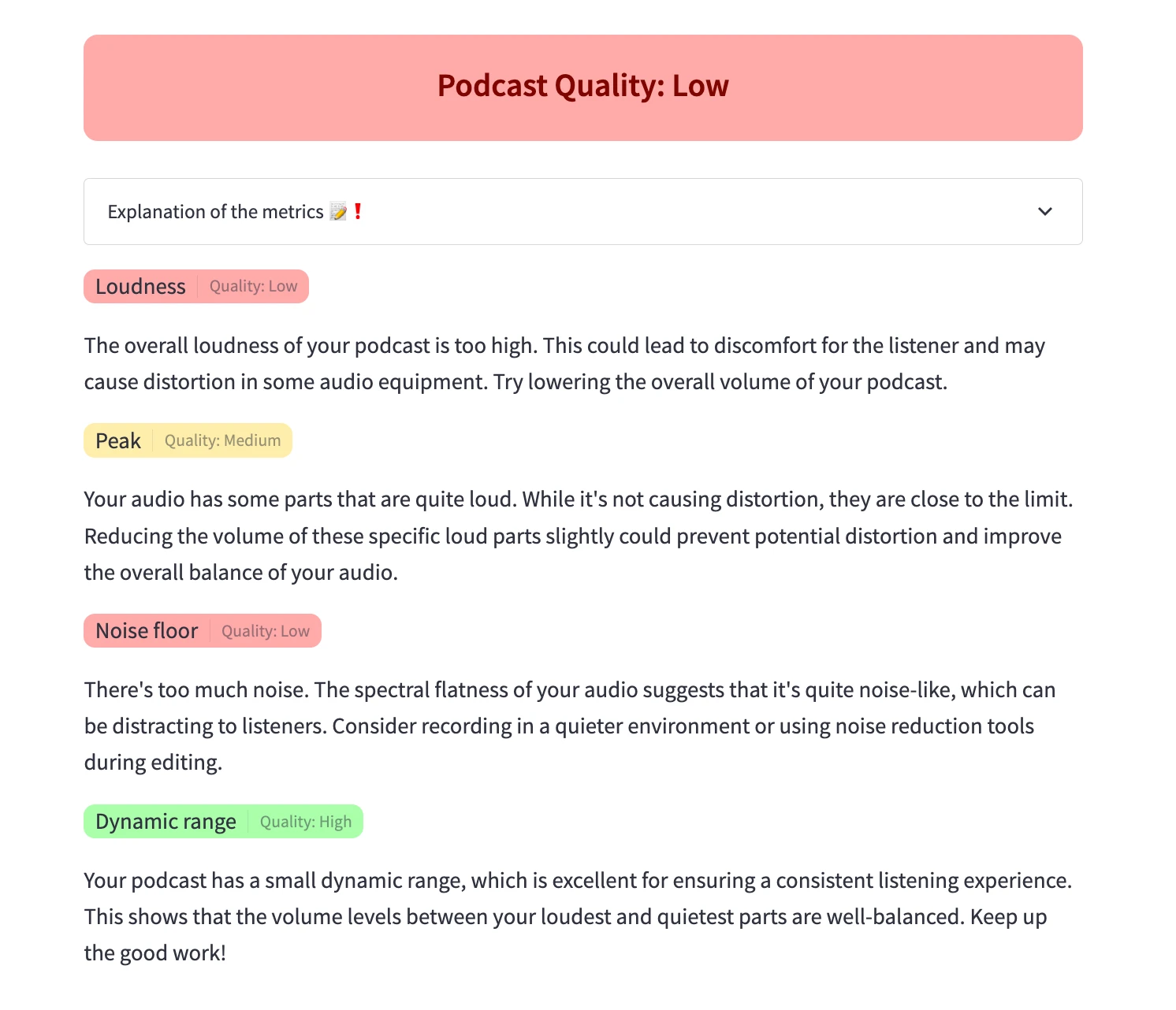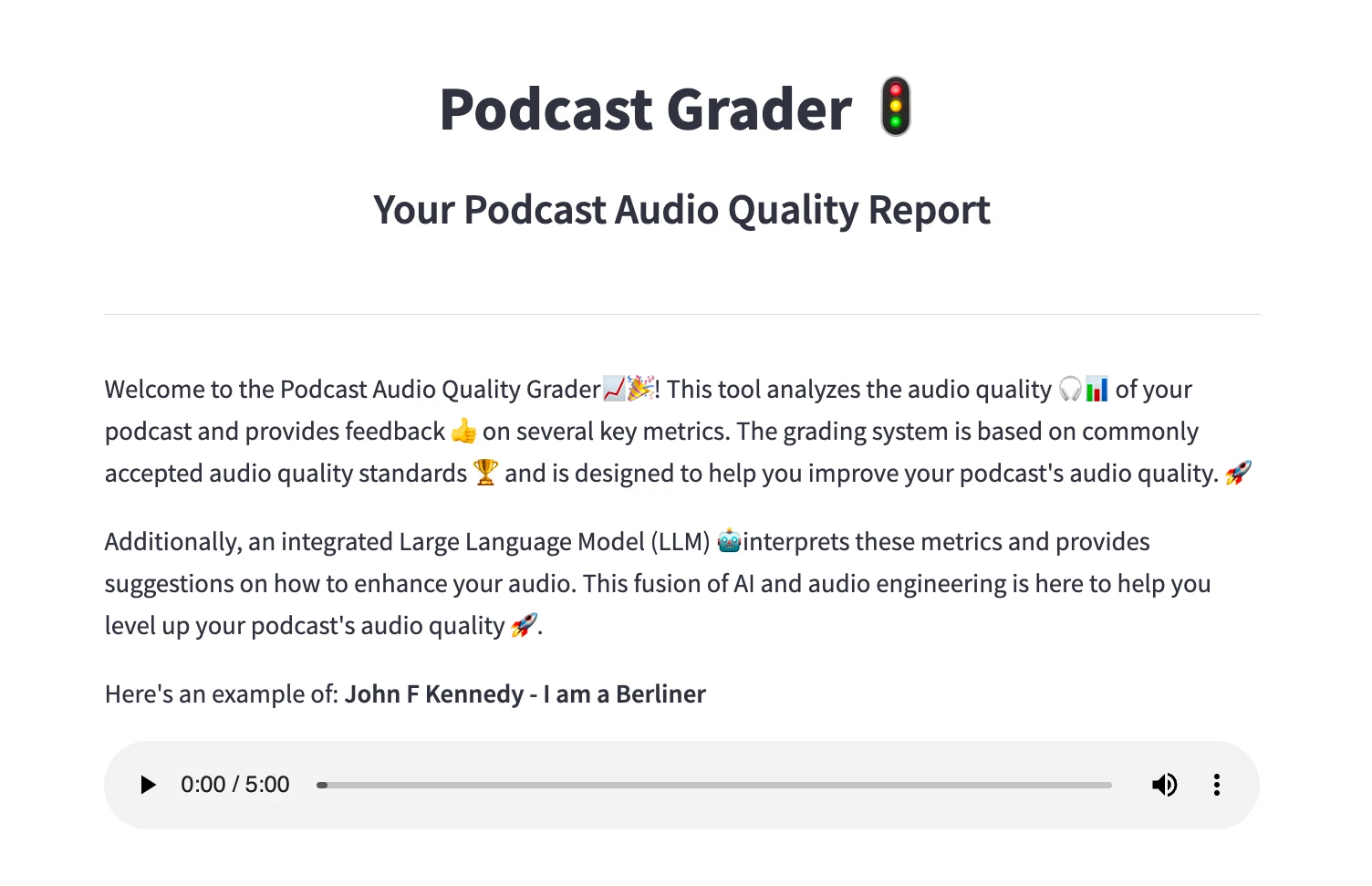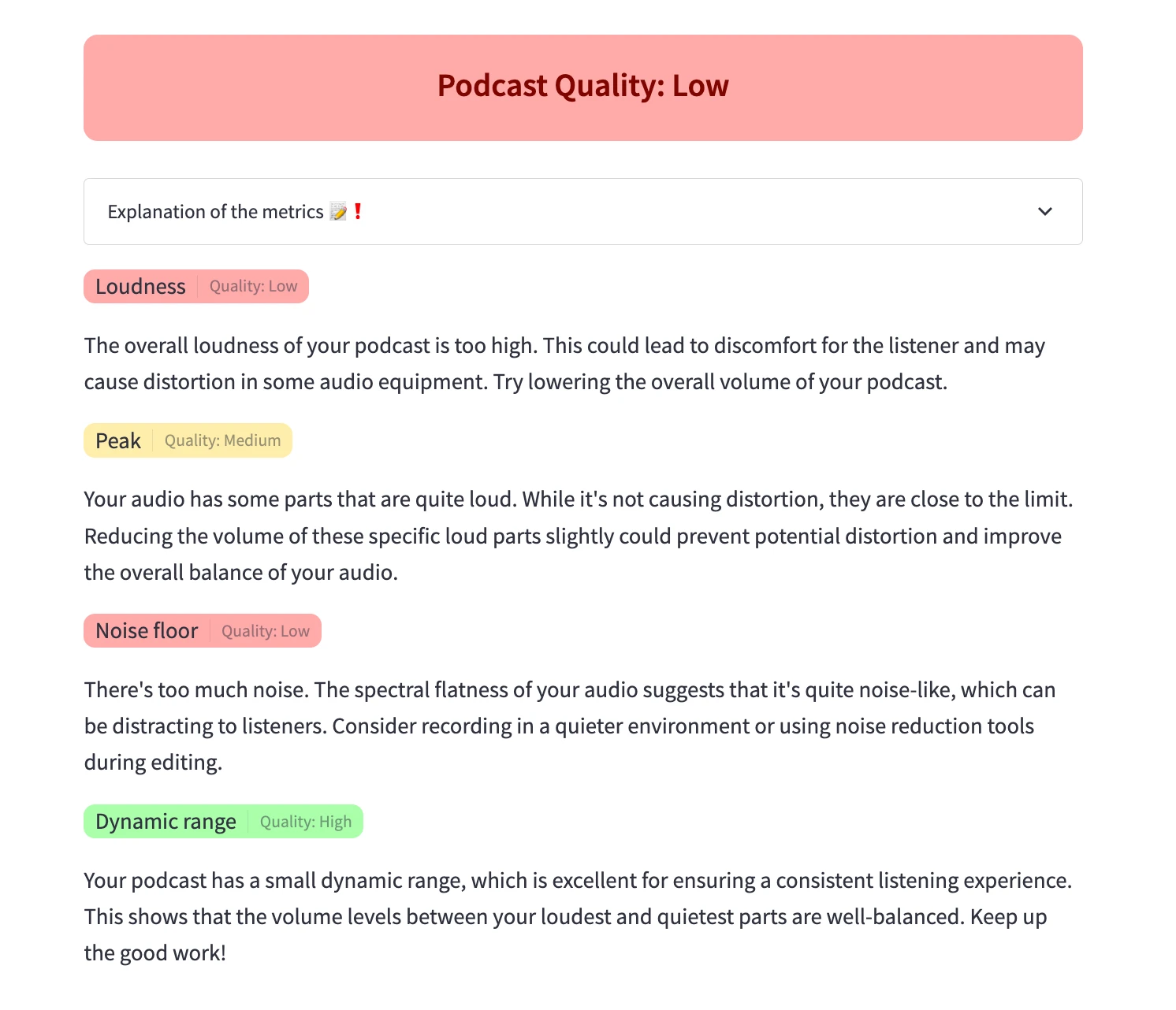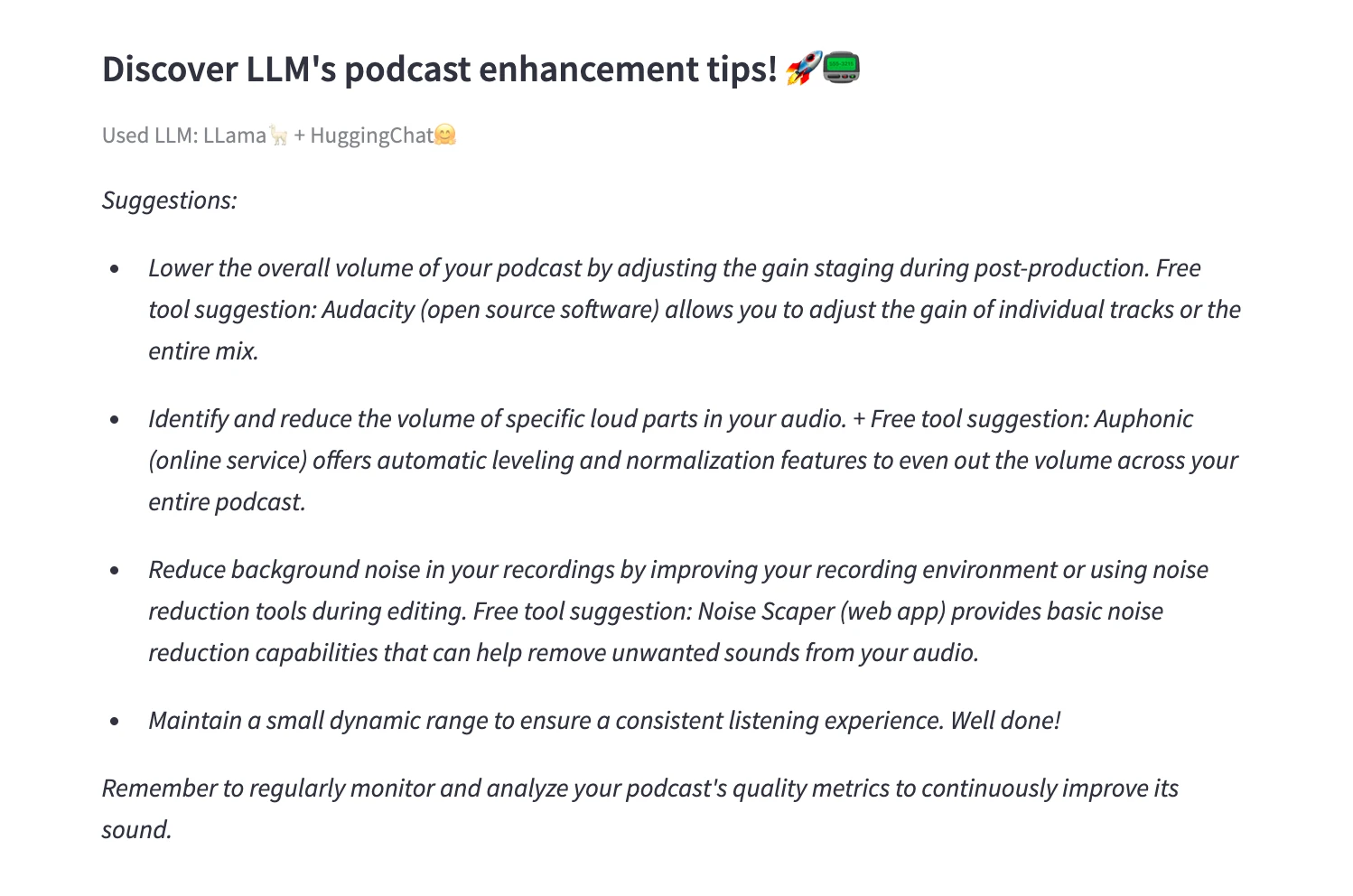
How to Grade Your Podcast Audio Quality
28.06.2023
Try it out, it’s free: Podcast Grader
A free tool to evaluate your recorded episode 📈
Following up on our previous conversation about the synergies of podcasting and Large Language Models, I’d like to introduce you to Podcast Grader, a free tool that helps you as a podcaster quickly check your podcast audio quality.
What is Podcast Grader?
TLDR: Podcast Grader is a free tool that uses AI to assess the quality of your podcast, providing detailed feedback and actionable steps for improvement. 📝
If you navigate to the app, you’ll find a sample of the speech John F. Kennedy gave in Berlin in 1963. We treat this recording as if it were a podcast. 🤗🤫

Let me elaborate a little. Podcast Grader is an app that podcasters can use to check the quality of their recording before uploading them. To do this, we use established Python packages from the audio field, such as librosa and pyloudnorm. The application evaluates the audio quality of your episode and provides comprehensive feedback. These results are passed on to an AI (LLM). The LLM not only identifies areas for improvement, but also provides actionable steps to improve the listening experience of your podcast. 🔍🔧
Podcast Grader tackles the challenge of delivering consistent, high-quality audio – an aspect that can significantly influence listener engagement and retention. Imagine the following scenario: You’ve just started podcasting, recorded an interview, and finished editing. The field of editing is very versatile, and once you’ve identified a problem, you can’t overlook it. Is the noise suffering from a poor quality microphone? Is the guest’s volume too low or too loud? This tool makes it incredibly easy to test the audio quality of your podcast. It provides valuable insights even before you hit the publish button, and gives you the option to incorporate the suggestions for improvement. 📊👂
Key Features of Podcast Grader

Podcast Grader provides four metrics that you can use to evaluate your podcast. We use these metrics because we think they are the most important for a podcast. Each of the metrics is rated as either low, medium, or high. The average of all the scores is used to calculate the overall score. Here is the explanation of each metric:
- Loudness Analysis: This determines the overall volume of your podcast, providing feedback on whether it’s too loud, too soft, or just right, thereby ensuring a comfortable listening experience for your audience. 🔊
- Peak Analysis: Identifies the loudest part of your podcast and provides advice to prevent distortion or a lack of impact. This feature helps to maintain a balanced and pleasant sound throughout your podcast. 🏔️
- Noise Floor Analysis: This measures the quiet background noise when no one is speaking, providing feedback if the noise floor is too high or too low. A well-managed noise floor can dramatically improve the clarity of your podcast. 🎶
- Dynamic Range Analysis: This calculates the difference between the loudest and quietest parts of your podcast, providing feedback if the dynamic range is too large or too small. A well-controlled dynamic range ensures that your listeners can appreciate every word and every pause. 📈📉
After running through these metrics, Podcast Grader generates a comprehensive report using a Large Language Model (LLM). This report is based on the evaluated metrics of your podcast and includes recommendations for improving audio quality. 📄🤖

Usage
As mentioned at the very beginning, it is free and runs on Streamlit. All you need to do is navigate to Podcast Grader and upload your podcast as an mp3 file using the file uploader on the left. The episode will be shortened to 5 minutes to avoid computational bottlenecks. The app only takes a few seconds and voila - your podcast is ready. There is no limit to the number of episodes Podcast Grader can handle. Consider subscribing to the newsletter to not miss future public releases.
Closing Remarks & Next Week
With tools like Podcast Grader, it becomes easy to ensure audio quality of your podcasts and eases the burden for more people to join podcasting. It’s important to remember that the audio quality can make or break the listener’s experience. By providing podcast creators with a way to accurately measure and improve their audio quality, Podcast Grader can be a step in your podcast production pipeline. 🌟
This exemplifies how AI and LLMs can be integrated into practical tools that benefit podcast creators, a topic we’ve explored in our previous posts. Remember, the world of podcasting is ever-evolving, and as a podcaster, staying ahead of the curve is crucial. Tools like Podcast Grader provide a way to do just that. They allow us to harness the power of AI, improve our content, and ultimately, create a more engaging and enjoyable experience for our listeners. 👥
Stay curious, keep exploring, and let’s make some noise in this exciting world of podcasting!
Exploring more
If you think you can improve your audio quality read more about podcast equipment in The Ultimate Guide to Podcasting Equipment: From Basics to Advanced Gear and in Essential Podcasting Equipment: Microphones and Cameras for Quality Production.